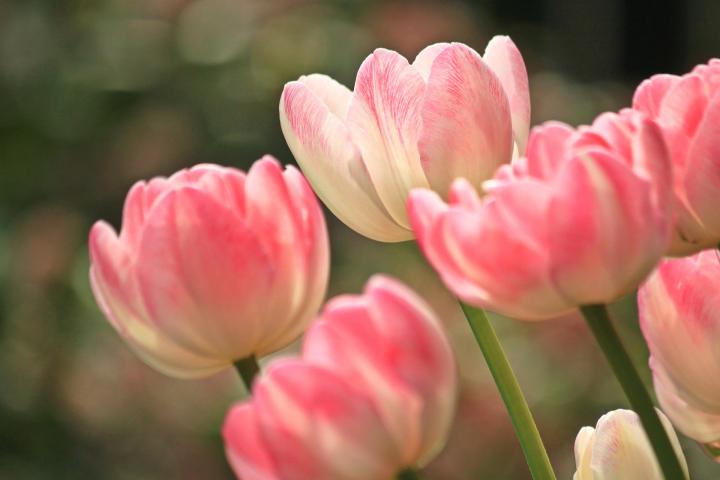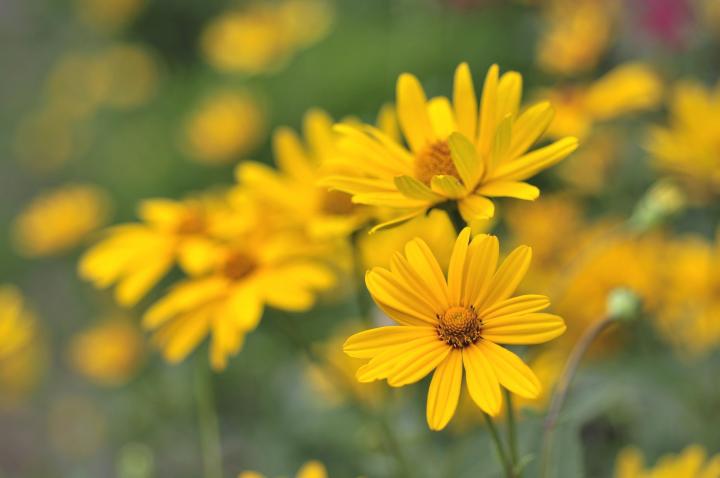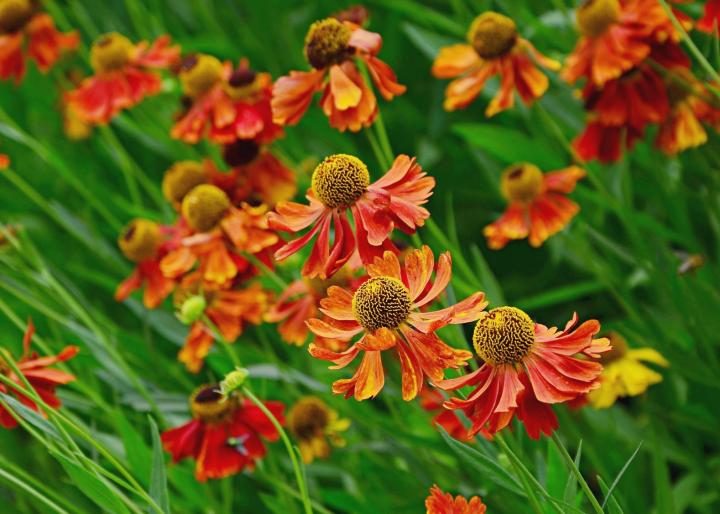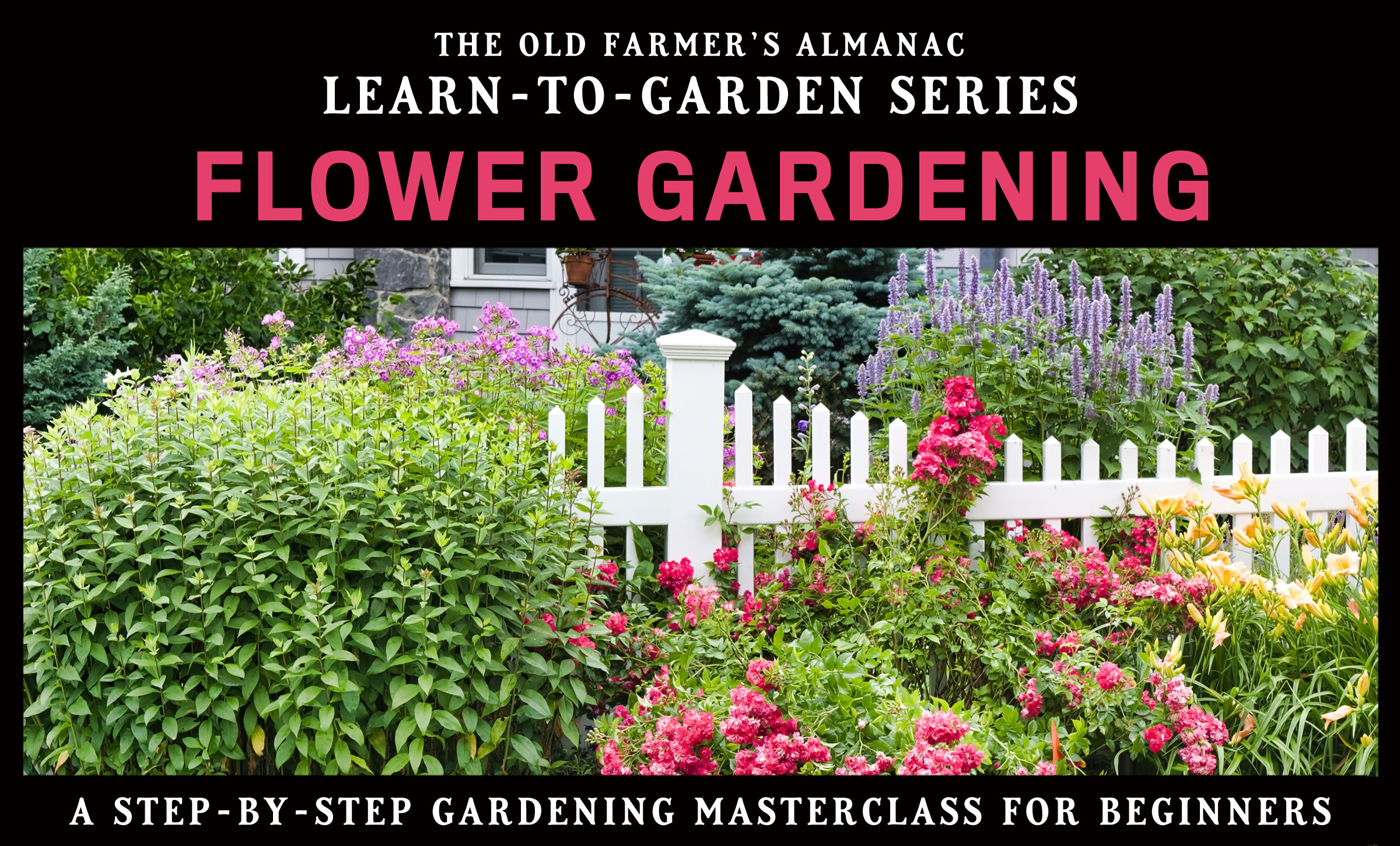Body
Imagine a gorgeous flower garden drenched with color from early spring to the first frost of autumn.
Advertisement
A daydream, you say? Not anymore! This flower garden design fills the wish list of amateur and expert gardeners alike with …
- Constant color: Spring flowers and foliage in burgundy, pink, and blue give way to yellow, orange, blue, and ebony for summer and autumn.
- Effortless impact: This plot is almost maintenance-free. For at least five years, it will need no staking, dividing, or pruning—only fertilizing, feeding, and maybe a bit of weeding.
- Easy adaptability: The plot size can be reduced or expanded to suit your space (and time), and these plants tolerate most climates, whether the first freeze occurs on September 10 or November 15. (Because most of these perennials need winter chill, this garden is not appropriate for subtropical climates such as southern Florida and southern California.)
Three Seasons of Color
Spring Color
- ‘Black Lace’ elderberry
- Rozanne geranium
- ‘Foxtrot’ tulip
- ‘King of Hearts’ dicentra
- ‘Obsidian’ heuchera
- Wine & Roses weigela

Tulips
Summer Color
- ‘Connecticut Yankee’ delphinium
- ‘Goldsturm’ rudbeckia
- ‘Mardi Gras’ helenium
- ‘May Night’ salvia
- ‘Mönch’ aster
- ‘Summer Sun’ heliopsis
(‘Black Lace’ elderberry, Rozanne geranium, ‘Obsidian’ heuchera, and Wine & Roses weigela will still bloom.)

Heliopsis
Fall Color
- ‘Arendsii’ monkshood
- ‘Mönch’ hardy aster
(‘Black Lace’ elderberry, Rozanne geranium, ‘Goldsturm’ rudbeckia, Mardi Gras helenium, ‘May Night’ salvia, ‘Obsidian’ heuchera, ‘Summer Sun’ heliopsis, and Wine & Roses weigela will still bloom.)
Garden Ground Rules
- The bed is 16 feet long and 6 feet wide.
- The garden requires at least six hours of sunlight a day.
- The 13 plant varieties are massed in numbers of each for maximum color and instant curb appeal. The plan is customizable to your best advantage, as a border or an island.
- To create larger beds, double or triple the number of plants
- If space (or time) is at a premium, cut the length of the bed to 8 feet, reduce the number of plants accordingly, and forgo the large ‘Black Lace’ elderberry shrub.
- For a centerpiece in the middle of a lawn, place the elderberry and taller perennials in the middle and surround them with plants of shorter stature, ending with Rozanne geranium and ‘Obsidian’ heuchera at the edge of the bed.

Best Three-Season Plants List
A three-season garden requires three essential ingredients:
- Perennials that bloom copiously year after year
- Small shrubs with color-saturated foliage all season long
- Plants that do not spread aggressively
These characteristics are found in all of the following:
- Elderberry (Sambucus nigra ‘Black Lace’)
1 plant
- Weigela (Weigela Wine & Roses)
2 plants
- Bleeding heart (Dicentra ‘King of Hearts’)
4 plants
- Heuchera (Heuchera ‘Obsidian’)
2 plants
- Black-eyed Susan (Rudbeckia fulgida var. sullivantii ‘Goldsturm’)
2 plants
- Ox eye (Heliopsis helianthoides var. scabra ‘Sommersonne’, aka ‘Summer Sun’)
2 plants
- Sneezeweed (Helenium ‘Mardi Gras’)
2 plants
- Salvia (Salvia x sylvestris ‘Mainacht’, aka ‘May Night’)
4 plants
- Cranesbill (Geranium ‘Gerwat’, aka Rozanne)
8 plants
- Aster (Aster x frikartii ‘Mönch’)
3 plants
- Tulip (Tulipa ‘Foxtrot’)
40 bulbs
- Monkshood (Aconitum carmichaelli ‘Arendsii’)
6 plants
- Delphinium (Delphinium ‘Connecticut Yankee’ series)
6 plants

Helenium
Tips for Success Every Season
- Before you start digging, arrange the potted plants on the bed so that you can get a general idea of what the garden will look like. Remember to leave space between the plants to allow them to grow wider.
- Plant from the back of the bed to the front. Set shrubs and perennials at the same depth as they are in containers.
- For a lush look, plant tulip bulbs thickly (about 5 per square foot of bed). After they bloom, remove the dead flowers so that the bulbs put their energy into storing nutrients for the next season rather than into setting seeds. Remove tulip leaves after they brown. Don’t worry about appearances; nearby perennials will cover up the aging leaves.
- Fertilize if you want these plants to thrive. Scrape away any mulch from the base of each plant in the early spring and spread an inch of compost around the plants. In July, lightly mix bonemeal or a slow-release fertilizer into the surface of the soil above the bulbs. (Note: Bonemeal may attract rodents that will dig for bones.) Learn more about organic soil amendments.
- Spread 3 inches of mulch over the bed. It will help to retain moisture and suppress weeds. Use an organic material (such as shredded bark or leaf mold), which adds nutrients to the soil as it decays. Cedar bark mulch is an excellent choice as well, because the resins in it repel many insects and prevent fungal diseases. Learn more about mulch.
- Remove fading flowers to increase perennials’ bloom production. Shrubs drop their old flowers and will bloom again if conditions are right.
- Do not remove brown foliage on perennials until early spring when new green growth appears. The dead material insulates plant roots from the temperature extremes of winter.
- If you must prune your shrubs, do so after the shrubs flower, not in early spring.
Once your three-season plot is planted, be patient. Perennials reach their full size and beauty by the second season. Shrubs grow more slowly, reaching their mature size 3 to 5 years after planting.
Do you have a perennial garden? What’s your favorite perennial flower? Let us know in the comments below!















Comments